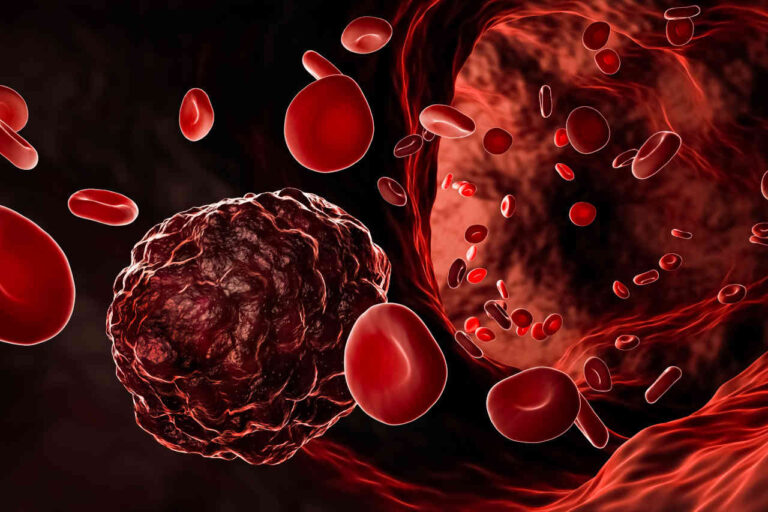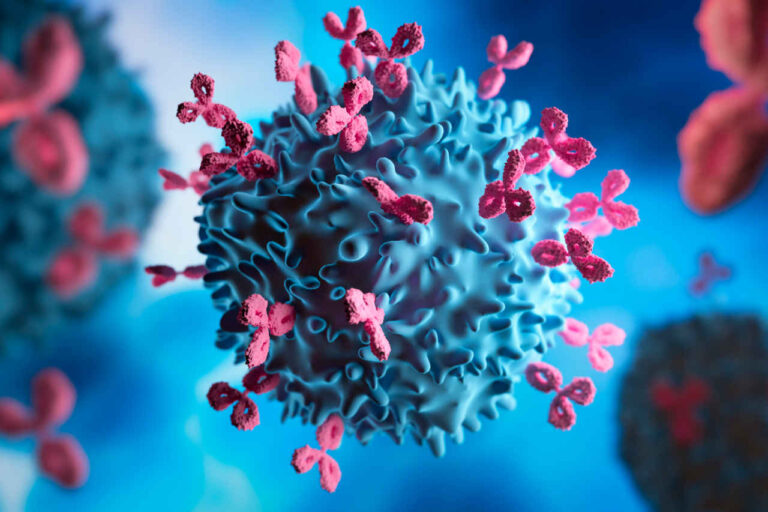
Cancer is one of the most deadly health issues in the world. It exists in many different forms, and one of these forms is acute myeloid leukemia (AML). AML is a type of blood cancer, and it originates from the bone marrow. If not treated promptly, this type of cancer typically gets worse quickly. AML is also called acute nonlymphocytic leukemia or acute myelogenous leukemia.
Get Copay Assistance
Speak to a SpecialistThe bone marrow is a very important part of the human bone as it is responsible for the production of white blood cells, red blood cells, and platelets in the human circulatory system. When the bone marrow gets affected by this cancer, the bone marrow starts to produce abnormal cells known as blasts.
According to recent studies, AML is the most common type of leukemia that affects adults. In the United States, about 20,000 people get this cancer each year, and while it is common among adults, it also affects younger people.
Cancers such as AML can be caused by mutations that turn off tumor suppressor genes or turn on oncogenes. For example, changes in genes such as c-KIT, FLT3, and RAS can occur in AML cells. Changes such as these can cause bone marrow cells to grow out of control or stop maturing in a normal way.
One of the best treatment options for AML is Xospata. In this article, we will discuss how this medication works, the proper dosage, and the side effects of using this drug.
What Is Xospata?
Xospata is a drug prescribed for the treatment of acute myeloid leukemia (AML) with a certain mutation in adults, known as the FMS-like tyrosine kinase 3 mutation (FLT-3). This mutation causes the leukemia cells to grow and develop rapidly, leaving less opportunity for healthy blood cells to be produced.
The mutation is also the most common type of mutation in AML patients. One in every three people with AML have the FLT-3 mutation. The administration of Xospata comes after a patient has been tested for the presence of the mutated gene and if other forms of treatment have not worked.
Xospata is a trade name for the medication whose active agent is gilteritinib. Gilteritinib is a part of a drug subclass known as tyrosine kinase inhibitors, or TKIs. These inhibitors target and attack cancer or abnormal cells. Xospata, in particular, inhibits the enzyme, FMS-like tyrosine kinase 3 (FLT-3). The medication comes in 40 mg tablets that are taken whole. Do not crush, break, or chew the tablets.
Approval and Efficacy
The Food and Drug Administration (FDA) in the US has approved Xospata since 2018. This is against the backdrop of numerous studies that showed that Xospata works in treating AML FLT-3 mutation.
In one of these studies, the effect of Xospata was compared to that of the other treatment options available for AML. The purpose of the study was to determine which of the treatment options helps achieve complete cancer remission.
At the end of the study, it was discovered that 14.2% of people who used Xospata achieved remission as opposed to 10.5% for people who used other treatment options, such as chemotherapy. The participants who used Xospata also stayed in remission longer and lived longer than the patients who used chemotherapy. The difference in remission duration was 13 months, while the difference in longevity was 4 months.
Speak to a Specialist About Copay Assistance
Dosage

There are different Xospata dosages for different people. This is because there are many factors determining the exact dosage, and some of these factors include underlying medical conditions and the severity of the AML.
Most times, you will start with a low dosage, and using your response rate as a gauge, the doctor will adjust the dosage. The goal is to start you on the smallest dosage that provides the most desired effect.
If you start noticing any side effects, you should contact your doctor immediately. Your doctor will most likely stop the administration of the drug, then reduce your dosage to help you avoid side effects.
The recommended dose for using Xospata to treat acute myeloid leukemia is 120 mg. It may be reduced to 80 mg if side effects start to show up. If you miss a scheduled dosage and your next dose is still about 12 hours away, take the drug immediately. On the other hand, if the next dose is within 12 hours, simply wait for the next dose. You are not to take more than one dose of the medication within 12 hours.
Note that this medication is medically designed to be a long-term treatment option. As long as the doctor has determined that the drug is safe for you and you do not experience any side effects, you can expect to use Xospata long-term.
Side Effects of Xospata
There are some mild and serious side effects that could arise from the use of Xospata. Note that the side effects mentioned below do not represent all of the potential reactions associated with the use of the medication.
Thus, it is important that you talk to your doctor or pharmacist to get a better idea of all the side effects associated with the use of this drug.
Mild and Common Side Effects
Some of the common side effects you may experience with the use of Xospata include:
- Fatigue
- Joint and muscle pain
- Low blood pressure
- Edema
- Fever
- Diarrhea
- Sores or swellings in the mouth
- Constipation
- Increased level of liver enzymes
- Skin rash
- Breathing difficulty
- Dizziness
- Vomiting
- Nausea
These side effects are classified as mild or common because they usually go away after a few days or weeks. However, if they persist or become severe, you should talk to your doctor.
Ask a Specialist About Side Effects
Serious Side Effects
The following side effects are not common, and you should seek medical help or call 911 immediately after you start experiencing them:
- Pancreatitis
- Brain Swelling, also known as posterior reversible encephalopathy syndrome
- Abnormal heart rhythm
- Cell differentiation, a condition where cells change and grow in number. Some of the symptoms include sudden weight gain, fever, signs of kidney problems, shortness of breath, and low blood pressure. Your doctor may interrupt Xospata if signs and symptoms are persistent, and resume when signs and symptoms improve.
Cost
The amount of money you pay to get Xospata depends on many factors. Some of them include your healthcare provider, your insurance plan, the pharmacy that you use, and your location. Because the cost varies for different people, contact your pharmacy to get the most up-to-date price.













